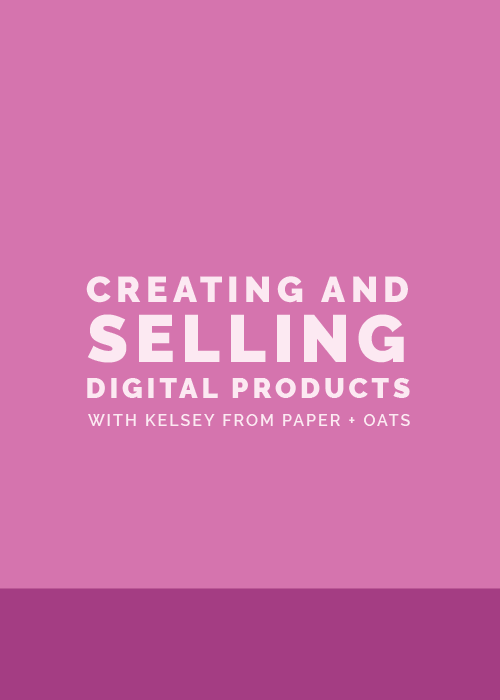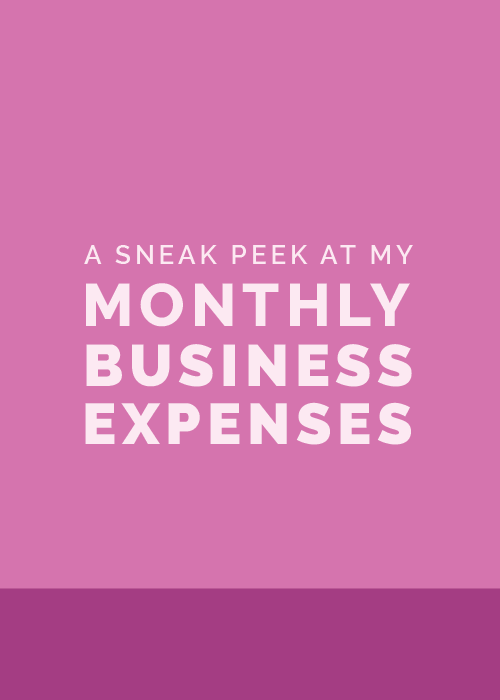Digital products are a fantastic passive income source for creative businesses.
Unlike service-based work, items like stock images, printables, and digital files can be created and sold over and over again. You can do the work once, sell your products on autopilot, and bring in more income without little extra effort.
More creatives are becoming aware of the benefits of digital products, and I thought it would be helpful to start a conversation on the topic. So two weeks ago I invited Kelsey Baldwin of Paper + Oats to join me for an Ellechat and discuss the ins and outs of creating and selling digital products.
For those of you that don’t know Kelsey, she’s a talented designer whose had some awesome success selling digital products. I knew she’d have some great insights to share on the topic, and she didn’t disappoint.
We discussed:
- How Kelsey got her business off the ground and became an expert at creating and selling digital products
- Why digital products are a great source of passive income
- Digital product ideas and all the items that fall under the digital product umbrella
- How to sell digital products over and over again
And that’s really just the tip of the iceberg.
In case you missed it, you can watch the replay below or keep scrolling to read some of the early highlights of our chat.
Early highlights
7:24 Lauren: What are digital products?
Kelsey: A lot of people go right to the printable thing: so pdf files, jpegs or things that can be printed at home. But it can be a wide range of things, anything that can be delivered digitally, not physically shipped.
8:54 Lauren: What are the advantages of creating and selling digital products? Disadvantages?
Kelsey: Kind of like I said before, the risk is really low. If nobody buys it you’re just out your time. It’s also good to create any additional revenue stream for your business. So if you’re a freelancer or provide a service that’s dependent on your time.
So you can only take on as many clients as your schedule allows and your trading dollars for hours. Digital products are great because you can create it once and you can sell it over and over and it’s not dependent on your time.
And it’s not something you have to put a lot of time into after it’s created. It runs automatically. It creates this other revenue stream that if you can build it up so that it’s consistent it’s a nice baseline that you can fall back on especially for freelancers or service providers where there are high seasons and low seasons.
12:06 Lauren: Why Etsy for digital products? And would you suggest that platform?
Kelsey: Yes I would! I kind of gravitated toward Etsy because I was already on there and around the time I stumbled into these printable planners and digital products was a time when they were adding features to their platform to make it more friendly to shops that wanted to sell these things. So before if someone bought it then you would have to email them the file and try to do it quickly after they bought it so they can have it right away and it was kind of a pain.
But Etsy recently added the feature where when they buy it they can dowload it automatically and the payments processed automatically. So, just having that whole environment and whole shopping experience on the back end of it and the logistics of the payment and the cart and checking out and delivering the files all those moving parts - Etsy already has systems for that so that’s why I like shopping there.
Plus a lot of people go to Etsy to look for things rather than typing something into Google, they’re going to go to Etsy to search for something. I think a lot of people go to Pinterest for that too, if you’re looking for a recipe or a craft or something they’ll go right there. So, I feel like the pool is kind of smaller and you have better odds of getting noticed.
Other questions answered throughout the webinar:
How do you develop digital products? What programs do you suggest?
How do you protect your digital products against theft and copycats?
Do you recommend leaving digital products up all the time, or opening and closing their purchase time like e-courses?
Is there a formula you use to take into consideration the time spent, value added and knowledge you have to price your digital products?
How many digital products should you have in your shop at a time?
How do you differentiate your products and/or brand from competitors?
Are there any special marketing tools or tricks you utilize to entice customers to follow through with purchase?
What options are there out there for someone who has an idea for a digital product, but can't design it? Are there e-book templates/other templates available to purchase somewhere?
Is there a way that makes selling from your site easy? What are your thoughts on sites like Gumroad.com?
When selling digital products do you find you have to follow up with a lot of customer service questions like how to download and open the PDF or how to print it properly?
A special thank you to Kelsey for joining me! If you enjoyed her feedback and want to learn more of her strategies for creating and selling digital products, be sure to register for her new course, Etsy on Autopilot.
And if you enjoyed this webinar, you can register for an upcoming Ellechat and catch the replays of past Ellechat webinars here!
Do you sell digital products? If so, which digital products do you offer and which platform do you use?

































